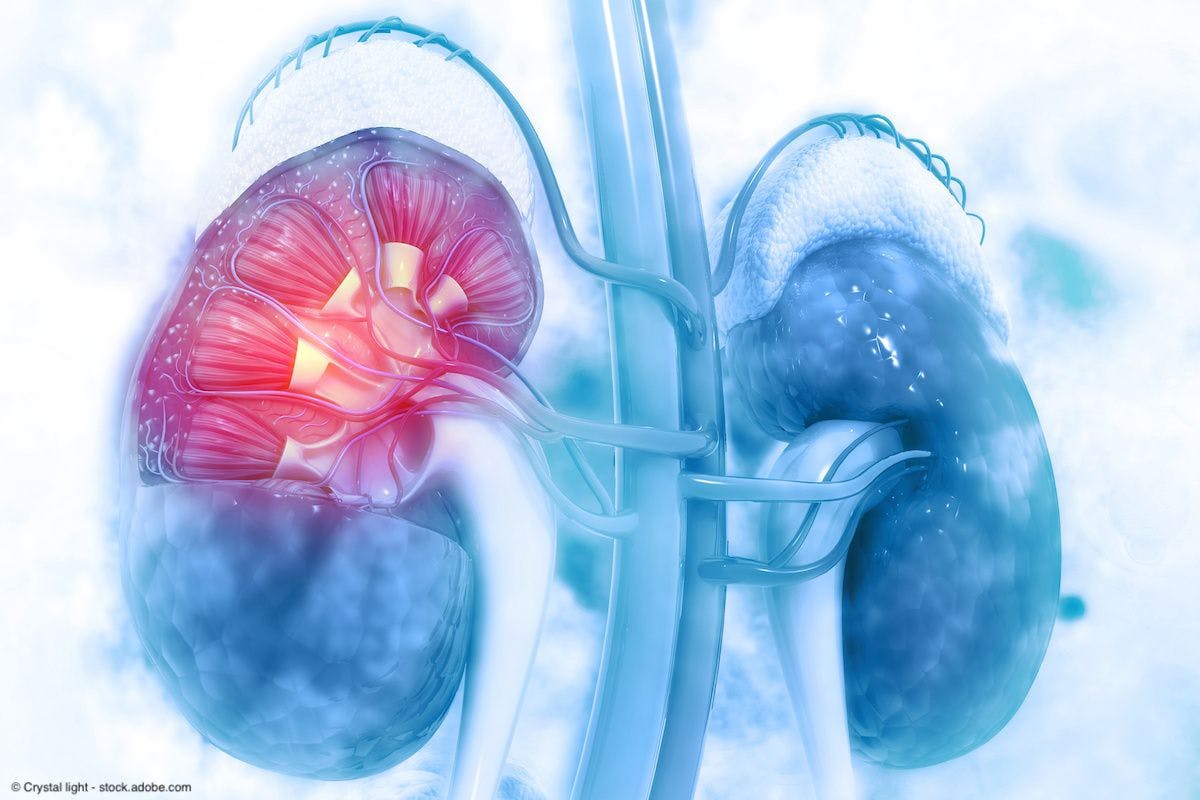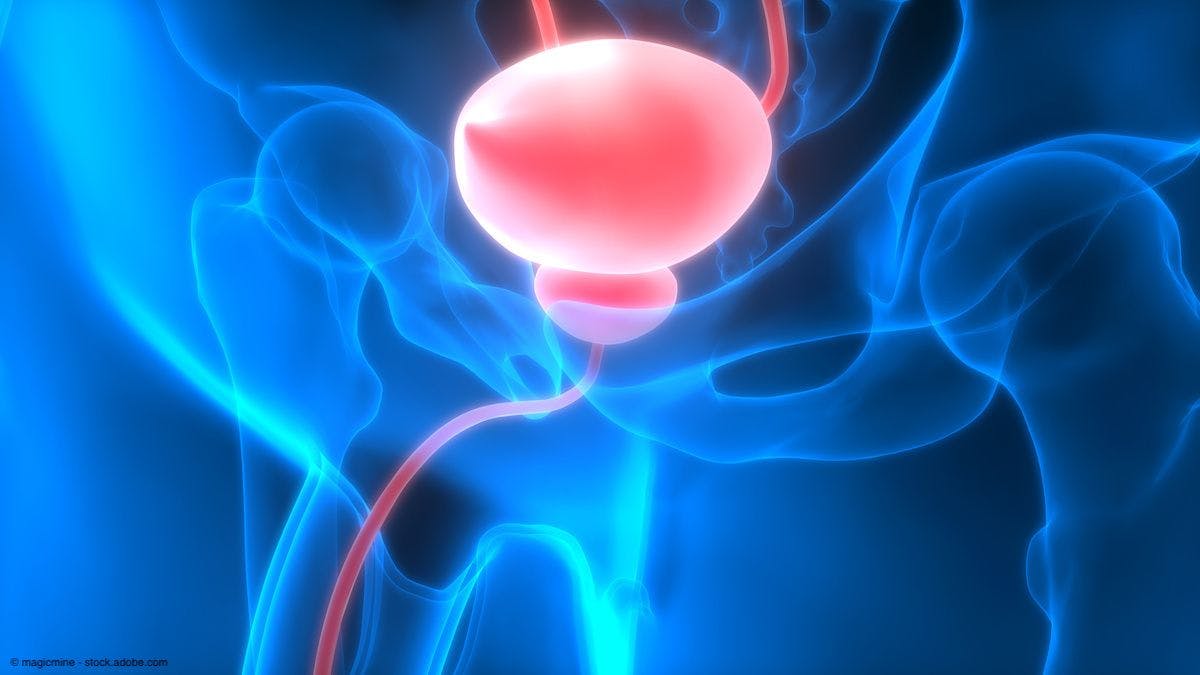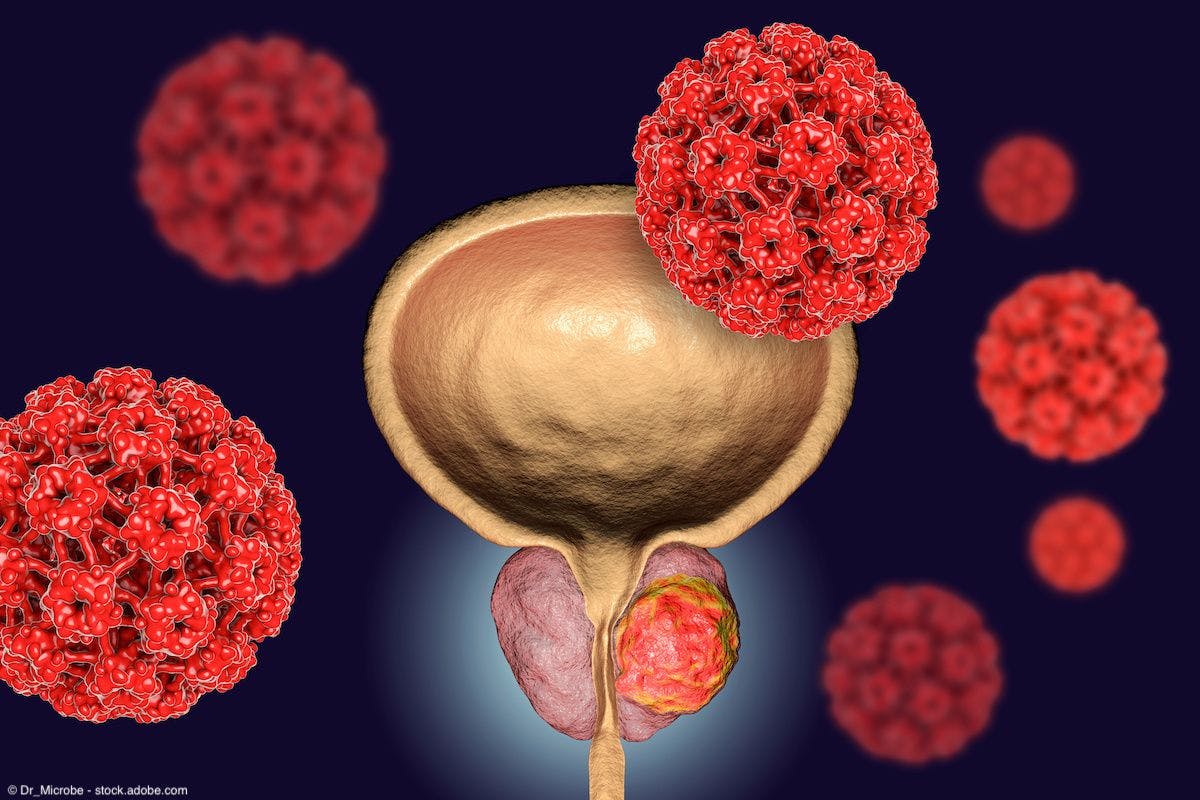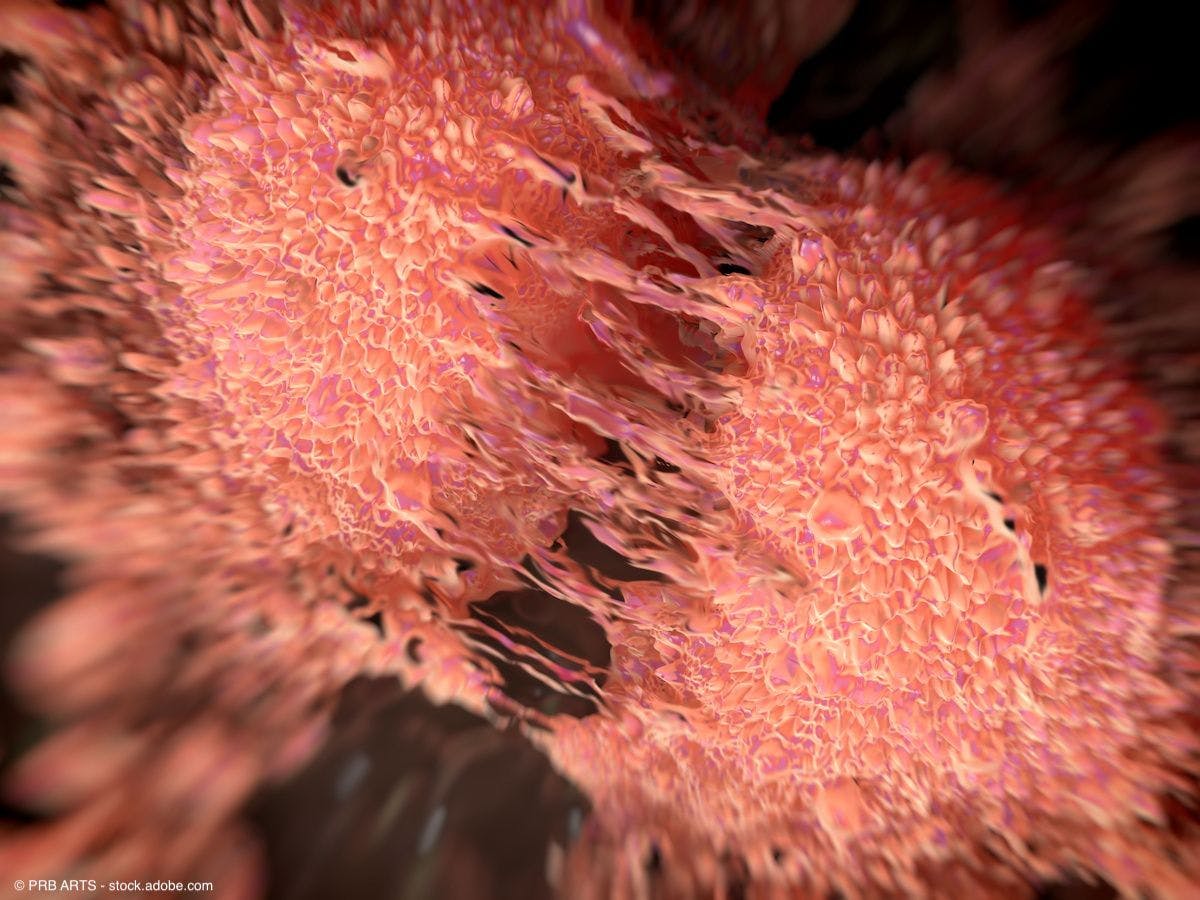Commentary
Article
Urology Times Journal
The management of high-risk localized prostate cancer: Back to the future
Author(s):
"I predict the future treatment for men with truly high-risk prostate cancer will see a fusion of what was thought to be standard local treatments combined with multimodality therapies that were initially impactful only in the more advanced disease state," writes Michael S. Cookson, MD, MMHC, FACS.
“Failure is success in progress.”—Albert Einstein
Early in my career, I had the opportunity to participate in the American Urological Association (AUA) guideline for management of clinically localized prostate cancer.1 It was both rewarding and eye-opening to learn the methodology behind the process and witness wide variability within the published literature not only in the defining risk categories but also in
Michael S. Cookson, MD, MMHC, FACS

treatment options for high-risk prostate cancer. Furthermore, the definition of success after treatment for men with high-risk prostate cancer was truly a confounder, and since publications often either had too short or incomplete long-term follow-up, a common practice was to report biochemical recurrence (BCR) as a surrogate end point for oncologic control. At 1 point, we identified 166 definitions of BCR in the literature.2 So, we learned and evolved in terms of defining high-risk patients using available clinical parameters such as prostate-specific antigen (PSA), Gleason score, and clinical stage. We also developed more standardized recommendations for PSA failure after both surgery and radiation therapy.3-5 These standards were necessary for evaluation of comparative efficacy given the lack of randomized trials in this disease state. Yet, for all the benefits of standardization in reporting, this does not address the fact that primary treatment for men with high-risk prostate cancer has changed very little in the past 30 years.
Prostate cancer remains the second leading cause of cancer-related mortality in men. Many, including myself, believe that 1 of the best opportunities to reduce deaths from prostate cancer will result from a combination of enhanced early detection of high-risk patients and effective treatment. Clinically localized prostate cancer refers to tumors confined to the prostate gland without evidence of metastasis. In prior decades, detection of early and low-volume metastasis was difficult if not impossible. However, contemporary imaging, including multiparametric MRI of the prostate and prostate-specific membrane antigen PET imaging, has significantly improved our ability to detect small-volume metastases and improved the accuracy of staging in these patients. Once this staging is completed, the next challenge will be to apply effective treatment and potentially curative treatments for these high-risk patients. Historically, this has proved to be a real challenge due in part to limitations in staging, coupled with only partially effective treatments—largely monotherapy—and failure attributed to tumor biology with an increased propensity for progression and metastasis among this risk group.
The management of high-risk clinically localized prostate cancer, incorporating guidelines from the AUA and the National Comprehensive Cancer Network, includes radical prostatectomy, radiation therapy (RT) with 18 to 36 months of androgen deprivation therapy (ADT), and ADT alone either for those patients with a short life expectancy or in symptomatic patients in whom definitive therapy is not advised.3-6 Unfortunately, these evidence-based recommendations are merely a reflection of the paucity of data and lack of commitment to clinical trials that target improvements in outcomes in these patients. Even in the absence of molecular staging or genomic classifiers, the fact is that combination and multimodality therapy is likely to improve outcomes over the standard recommendations. Yet, the best treatment for these men is yet to be defined and we continue to initially treat with surgery or RT plus ADT only to witness the progression of their disease state followed by sequential treatments that ultimately lead to metastatic and castration-resistant disease.
Over the past decade, I have spent a lot of time and effort in the advanced prostate cancer space. This initially resulted in participation in castration-resistant guidelines, where novel hormonal therapies, immunotherapy, and chemotherapy were trialed with modest but life-prolonging success.7 Very quickly, these therapies were moved up into the newly diagnosed, castration-sensitive metastatic patients with remarkably better improvements in disease progression and survival.8,9 I believed that it was imperative that urologists and advanced practice providers who care for men with advanced prostate cancer be at the forefront of these discoveries, allowing patients access to life-prolonging treatments as early as eligible given the remarkable progress. It is now a standard of care to offer treatment intensification with “double and triple therapy” to those with newly discovered metastatic prostate cancer. And treatment intensification with systemic therapy (docetaxel or an androgen receptor signal inhibitor in addition to ADT) has been shown to improve oncologic end points in high-risk and/or unfavorable nonmetastatic prostate cancer treated with local definitive therapy.10 However, the level of evidence in support of these combinations has not been sufficient to consider these treatments as standard of care.
Now, we stand at the precipice of a new era of discovery and treatment for men with newly discovered high-risk disease. There have been attempts to assess neoadjuvant ADT prior to surgery. Most of the studies consisted of single-institution trials with small numbers of patients, short durations of conventional ADT, and primary outcomes based on pathologic parameters. Secondary end points, such as PSA-free survival, were not impressive and confounded by underpowered studies and early salvage therapies. Studies assessing combinations with ADT and RT were more robust, larger in number, and powered for more meaningful outcomes including progression-free and overall survival. Consequently, longer-duration ADT, in combination with RT, was superior to RT alone and RT with shorter durations providing the data that have resulted in RT plus 18 to 36 months of ADT as a guideline standard.
I am aware of ongoing clinical trials that are evaluating neoadjuvant and/or adjuvant ADT prior to surgery, ADT plus combinations of neoadjuvant hormonal therapy with RT evaluating both treatment intensification and shorter duration of treatments. Many of these RT combination trials are also assessing the role of genomic classifiers to inform on duration of therapy. There are also PARP inhibitors in BRCA-altered germline disease in combination with local treatment, targeted radiopharmaceuticals, and immunotherapies being investigated among these high-risk patients. Hopefully, we will have some new high-level evidence soon and can begin to add to our armamentarium.
So, I predict the future treatment for men with truly high-risk prostate cancer will see a fusion of what was thought to be standard local treatments combined with multimodality therapies that were initially impactful only in the more advanced disease state. Improved imaging, staging, and patient selection derived from germline and molecular profiling will help in selecting the optimal combination therapy. Much-needed modifications in public attitudes and policy toward screening and early detection of men at high risk will help in identifying patients at an earlier disease state. Urologists and members of the multidisciplinary team will provide patients with improved long-term survival outcomes based on personalized risk stratification and patient preferences. My hope is that someday, the high-risk localized prostate cancer guidelines will relegate the advanced guidelines to historical or anecdotal relevance. In the words of the late George Burns, “I look to the future because that’s where I’m going to spend the rest of my life.”
REFERENCES
1. Thompson I, Thrasher JB, Aus G, et al; AUA Prostate Cancer Clinical Guideline Update Panel. Guideline for the management of clinically localized prostate cancer: 2007 update. J Urol. 2007;177(6):2106-2131. doi:10.1016/j.juro.2007.03.003
2. Cookson MS, Aus G, Burnett AL, et al. Variation in the definition of biochemical recurrence in patients treated for localized prostate cancer: the American Urological Association Prostate Guidelines for Localized Prostate Cancer Update Panel report and recommendations for a standard in the reporting of surgical outcomes. J Urol. 2007;177(2):540-545. doi:10.1016/j.juro.2006.10.097
3. Eastham JA, Auffenberg GB, Barocas DA, et al. Clinically localized prostate cancer: AUA/ASTRO guideline, part I: introduction, risk assessment, staging, and risk-based management. J Urol. 2022;208(1):10-18. doi:10.1097/JU.0000000000002757
4. Eastham JA, Auffenberg GB, Barocas DA, et al. Clinically localized prostate cancer: AUA/ASTRO guideline, part II: principles of active surveillance, principles of surgery, and follow-up. J Urol. 2022;208(1):19-25. doi:10.1097/JU.0000000000002758
5. Eastham JA, Auffenberg GB, Barocas DA, et al. Clinically localized prostate cancer: AUA/ASTRO guideline: part III: principles of radiation and future directions. J Urol. 2022;208(1):26-33. doi:10.1097/JU.0000000000002759
6. Schaeffer EM, Srinivas S, Adra N, et al. NCCN Guidelines insights: prostate cancer, version 1.2023. J Natl Compr Cancer Netw. 2022;20(12):1288-1298. doi:10.6004/jnccn.2022.0063
7. Cookson MS, Roth BJ, Dahm P, et al. Castration-resistant prostate cancer: AUA guideline. J Urol. 2013;190(2):429-438. doi:10.1016/j.juro.2013.05.005
8. Lowrance WT, Breau RH, Chou R, et al. Advanced prostate cancer: AUA/ASTRO/SUO guideline part I. J Urol. 2021;205(1):14-21. doi:10.1097/JU.0000000000001375
9. Lowrance WT, Breau RH, Chou R, et al. Advanced prostate cancer: AUA/ASTRO/SUO guideline part II. J Urol. 2021;205(1):22-29. doi:10.1097/JU.0000000000001376
10. Rajwa P, Pradere B, Gandaglia G, et al; European Association of Urology Young Academic Urologists Prostate Cancer Working Party. Intensification of systemic therapy in addition to definitive local treatment in nonmetastatic unfavourable prostate cancer: a systematic review and meta-analysis. Eur Urol. 2022;82(1):82-96. doi:10.1016/j.eururo.2022.03.031

Newsletter
Stay current with the latest urology news and practice-changing insights — sign up now for the essential updates every urologist needs.






























